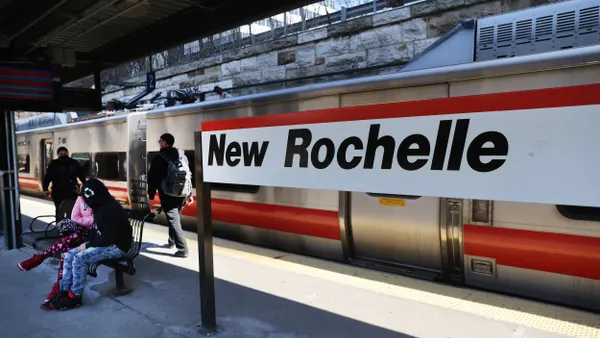Dive Brief:
- The California Building Standards Commission voted in June to alleviate obstacles that have hindered efforts to safely convert underused existing commercial buildings to other uses, according to a press release.
- This vote adds seven chapters from the International Existing Building Code into California’s 2022 Title 24 Part 10 Existing Building Code.
- The amendments are expected to help the state simultaneously address the climate emergency and California’s housing crisis, with a recent RAND report finding that 2,300 underutilized properties in Los Angeles can produce between 72,000 and 113,000 housing units.
Dive Insight:
The American Institute of Architects California, which initiated the code advancement in 2019, partnered with the State Fire Marshall to go through the code language line-by-line and simplify adaptive reuse of empty office space and retail structures for new housing. The measures to streamline reuse procedures come in the form of chapters 6, 7, 8, 9, 10, 11 and 13 of the International Existing Building Code, which will be added into the 2022 CEBC.
California’s existing code is confined to a prescriptive path, constraining the potential for adaptive reuse. But these amendments are expected to provide architects and designers the leeway to explore three distinct “compliance paths” for adaptive reuse: prescriptive, work area and performance. These options are aimed at enabling designers to select the most suitable compliance path based on the unique challenges of each building, unlike the existing code.
AIA California says this change not only satisfies safety requirements but also opens up a realm of possibilities for rehousing homeless people in a state beleaguered by a housing crisis.
The Southern California Association of Governments says converting commercial properties to housing could produce about 9% to 14% of the total housing the county would need to produce in the next eight years.
But legislative attempts to up-zone areas marked for single family use have encountered repeated failures, amid a reluctance to relinquish local oversight in favor of out-of-state megadevelopers.
Michael Malinowski, a consultant to AIA California on code and regulatory matters and a climate action principal at Applied Architecture Inc. in Sacramento, California, said that the Structural Engineers Association of California derailed prior code change efforts, initiated by the state’s Housing Development department, to bring the missing chapters of the International Existing Building Code to California. The Structural Engineers Association was the first group he met with to resolve concerns about technical variations between the different compliance paths. Most of these variations in the national code have since been corrected, he noted.
“California has had a big hole in its existing building code and it was the magnitude of filling up that hole which made it a daunting effort that took so long. It’s complicated because California has some unique characteristics to its building code. For instance, we’re among the first states to require fire sprinklers in single-family homes. So, the differences between California’s legal and regulatory and code environments and the national code make it a challenge,” Malinowski said in an interview.
“We need housing everywhere, but in California, that need is particularly acute. If you’re a developer who’s taking a 1970s bank building that has been empty for eight to ten years and you talk to the city about how you can turn it into an apartment building, the city would say, ‘make it meet current code.’ But it's just not as feasible to take every aspect of that building and bring it up to current code. You may as well just tear it down,” Malinowski explained. “[T]his initiative will provide a whole realm of opportunity for the private sector to put underused assets to new uses. It’s good for developers and architects, so it’s a win-win.”
The initiative is also expected to address the growing climate crisis. Adaptive reuse projects and renovations can save between 50% and 75% of embodied carbon emissions compared to new building construction, particularly where foundations and structure are preserved, since most embodied carbon resides there, Larry Strain, principal and sustainability expert at Siegel and Strain Architects, said in a note on embodied carbon reductions.
Malinowski expects facilities managers to initiate conversations with local developers in a bid to actively partake of the development process in the next year. “Developers are going to want to talk to the facilities management community about the facilities in these existing buildings that may need repurposing to serve new uses,” he said.
The proposed code change is slated to take effect July 2024.












